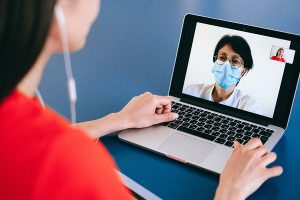Disabilities and Technology: Apps and Tools for Independence

Technology has made our lives easier in many ways. It has transformed the way we communicate, work, learn, and live. One of the most important ways technology has made an impact is in the lives of people with disabilities. Assistive technology can be a game-changer for people with disabilities, enabling them to live more independently and with greater ease. In this blog post, we will be covering some of the best apps and tools available for people with disabilities to help them improve their quality of life.
1. Communication Apps
For people with hearing or speech impairments, communication can be a challenge. There are apps available like Ava, Speechify, and Dragon Anywhere that help people with speech impediments to communicate more effectively. Text message and email features can also assist individuals in overcoming communication barriers.
2. Navigation and Mobility Tools
People with mobility impairments often face challenges when it comes to navigating new environments. Navigation apps such as Google Maps, Accessibyte Arcade, and BlindSquare offer valuable features that provide directions, locations of accessible ramps, elevators, crossings, and other useful information. It also offers options for reaching streets, and public areas that may require special assistance.
3. Education and Learning Apps
Learning can be quite challenging for people with disabilities, and it is essential to invest in tools and technologies that can help minimize these challenges. Educational apps like VBookz PDF Voice Reader and Pocket Braille, are beneficial for people with visual impairments. These apps help in reading books in multiple languages and translating text to braille. Similarly, Dictation apps like Dragon Dictate and Quicktate facilitate students with dyslexia or other learning disorders.
4. Entertainment and Socialization Apps
Everyone loves entertainment, and socializing with friends and families. Entertainment and socialization apps are equally important for people with disabilities. For example, Be My Eyes App which connects the visually impaired to volunteers who offer assistance through video calls, HappyTap and Special books can all offer wheelchair users, artistically inclined, and anyone with special needs the chance to be entertained and network with like-minded people.
5. Exercise and Health Apps
Finally, maintaining health and well-being is also important for people with disabilities. Fitness apps like MyFitnessPal, Fitbit, and Nike Training Club can help motivate individuals with disabilities to exercise and keep track of their progress. Similarly, apps like MyTherapy which offer reminders and trackers to keep track of medication can assist in improving overall health.
Conclusion:
These apps and tools are just a few examples of the many assistive technologies available that can help individuals with disabilities live more independently, communicate better, learn, entertain, and maintain their health and wellbeing. Integration of these technological advancements can transform the quality of life for people with disabilities. The importance of assistive technology cannot be stressed enough, and everyone should have equal access to these innovations. Let’s use technology to create a more inclusive society.
Book a free Consultation with us today!
Mobile : 1800960068
Email : contactus@iseeksupport.au









